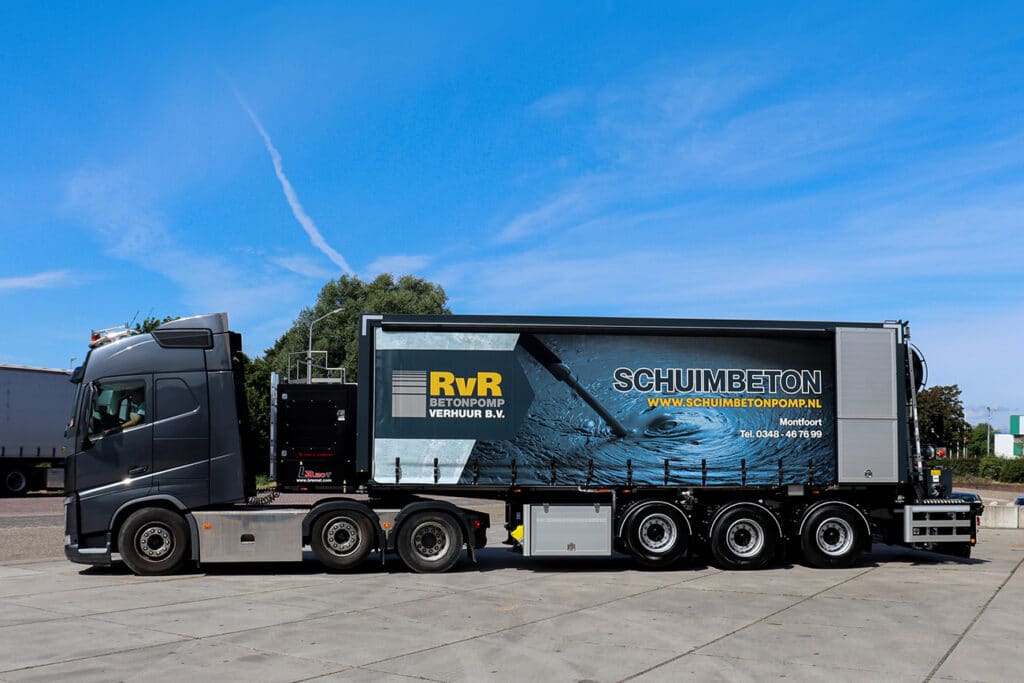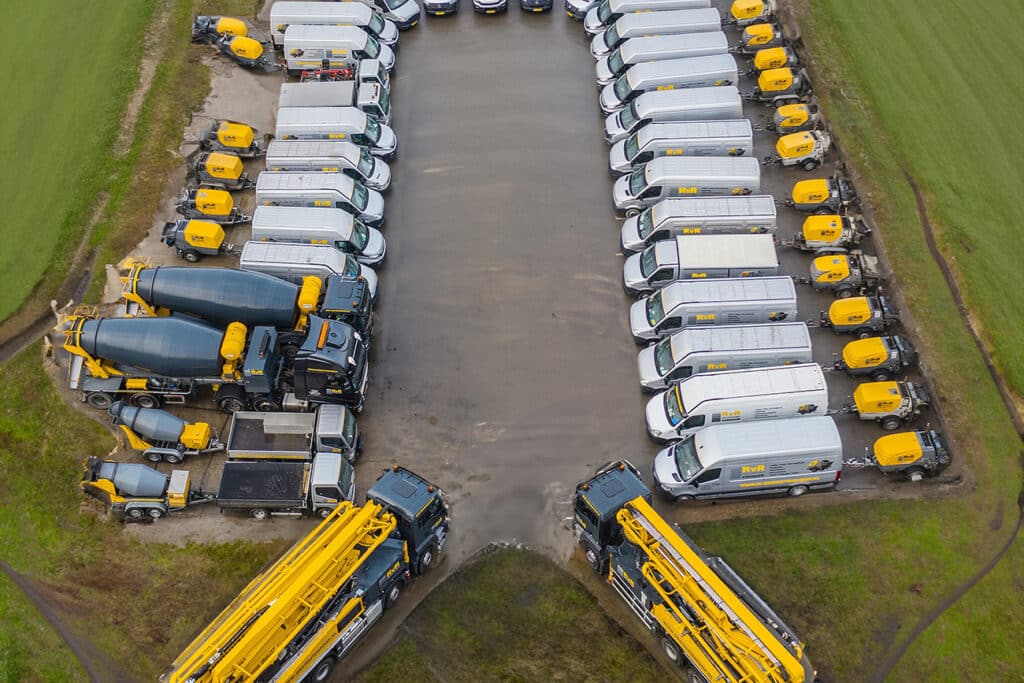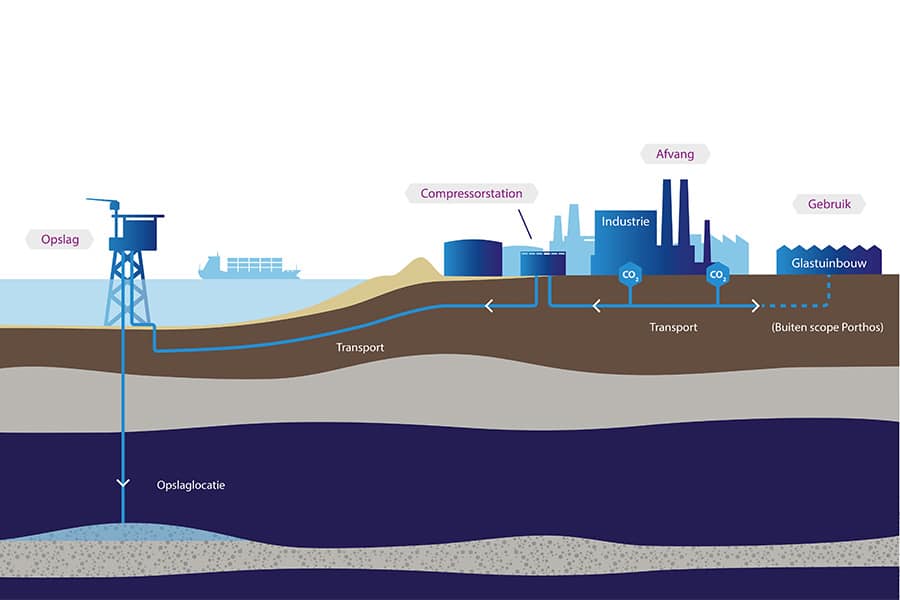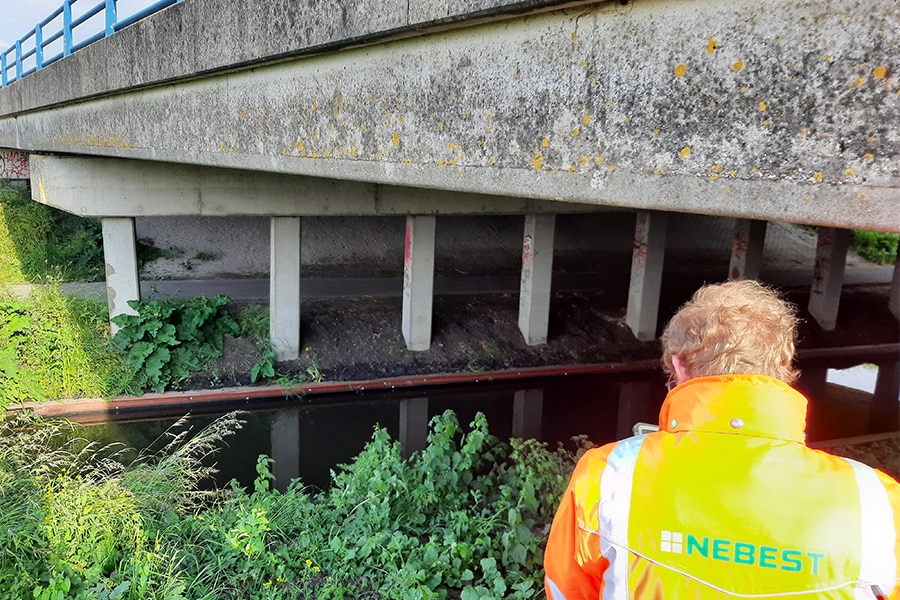
Foam concrete from a mobile factory. Light, insulating and sound dampening
With the arrival of a mobile foam concrete plant, RvR Betonpomp Verhuur has recently started offering a complete package and now works with foam concrete in addition to delivering, pouring, filling and finishing concrete. The brand new plant is compactly concealed in a trailer and can be used anywhere, like a small factory for foam concrete.

Several decades ago, crane operator René van Rijs discovered a small mobile concrete pump in Germany. He saw daily on construction sites how concrete was moved: by wheelbarrow or via a large concrete pump. There was nothing in between. By buying a small concrete pump and being the first to deploy it in the Netherlands, he found a gap in the market. Meanwhile, the company has existed for almost twenty years and Hans de Bruin is co-owner. Also, there are now more than seventy employees and around 35 concrete pumps and mixers driving around daily. Still, it remains a real family business in which not only many family members of Van Rijs and de Bruin work, but also the staff among themselves.

Machinery
The mobile installation for foam concrete is the latest addition to an already very extensive machine park. Van Rijs: "We now really offer a total package. We deliver the concrete, pour and pump it for small to very large projects, are specialized in pouring in places that are difficult to reach and finish the concrete if desired, for example with our butterfly machines. We also now no longer have to sell 'no' when a customer asks for foam concrete." The foam concrete pump is compactly concealed in a trailer that went into service in August. De Bruin: "Normally you have pump and mixer working separately on a construction site, but with this foam concrete installation you have everything together in one factory on wheels. In it are the ingredients, the mixer and the pump."

Five times as light
The new installation is in line with RvR Betonpomp Verhuur's growth strategy toward a total provider of concrete services and fits well with the increasing demand for foam concrete. Van Rijs: "It is a mixture of cement, foaming agent and water that is about five times lighter than regular concrete." This makes foam concrete very suitable to use for the fill layers in a building. It reduces the load on the structure. The other important property is that it insulates. Under house floors there is often a crawl space and if you fill it with foam concrete, the cold from the ground can no longer rise to the surface. Floor construction and insulation material in one. "We can then install underfloor heating directly on this and finish it nicely with an anhydrite floor or a cementitious screed. With a foam concrete floor 40 cm thick, you achieve an Rc value of about 3.5."

Preservation
Foam concrete is also very suitable for making filling layers. Van Rijs: "These are generally used under the screed to fill the spaces around the air conditioning ducts, pipes and electrics. With foam concrete you get a light pressure-resistant floor, which insulates thermally but also has a sound-damping effect. As far as we're concerned, it's a great product that can be used well in making homes more sustainable and in renovations."



